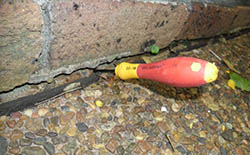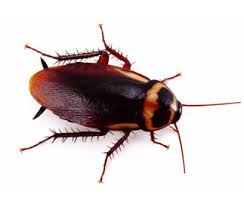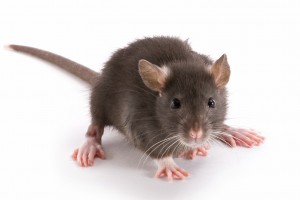

PEST CONTROL
Impact Pest Control is about servicing the consumer, being an owner operator means you get the right advice and the best quality the first time round. Our Professional pest control services; delivering you almost twenty five years of quality pest control services including termite inspection, termite treatment and cockroach extermination. At impact services, we specialise in pest and termite control and extermination, to protect your home or office which gives you peace of mind. Impact Pest Control a name you know and trust.
Our Pest control experts remove unwanted pests using the latest in pest control technology to ensure your family or staff are out of harm’s way.
Impact Pest Control services include:
TERMITES
If you think you have termites, here’s what you should do …
Whilst it is tempting to poke a screw driver into a suspicious cavity or pick open a mud tube tunnel or even attempt to treat termites yourself, research shows this can make the situation worse.
What tends to happen is the termites disperse into new areas which can make them even more difficult to locate and harder to treat.
Clients that call us with a suspected termite infestation are given a priority service call out. Most people are incredibly distressed and require reassurance and immediate control of the situation.
We deal with many varying degrees of termite infestations and no matter what your situation may be, we are well equipped to bring you peace of mind and a termite free home.
Termite prevention – How to care for your home …
Termites are everywhere in Queensland. With many homes under attack and more on the termite hit list, it makes sense to look after the health of your home.
An inexpensive annual house check-up is a recommendation endorsed by the CSIRO and the best termite prevention step you can take to ensure your home has a clean bill of health.
As termite activity is difficult to detect, authorities advice homeowners to engage a reputable Termite Control Company. Termites are frequently referred to as the silent destroyers. Early detection requires a trained eye and specialist equipment. Failure to uncover a termite diagnosis can cost you thousands.
To care for your home all year round, there are additional steps you can follow that will reduce the chance of termites infecting your home. See our handy home care list below …
Remove sources of moisture around the home

The subterranean termite is the biggest threat to your home. They require moisture to thrive and survive. By eliminating moisture around your home, this will help you avoid termites taking up residence in your home. Be sure to minimise overflows from hot water units, rainwater tanks and air-conditioning units. Ensure water has a natural flow away from the house. Clean gutters and repair broken downpipes.
Ventilate sub-floors and roof spaces

Ensure there is adequate air flow to subfloors and roof spaces. Avoid blocking ventilation grills. Clean up and remove any potential debris that termites can use as a feeding ground or a source to retain unnecessary moisture. Ensure weepholes are left open an are not accidentally blocked during the construction phase or later obstructed with garden beds or debris.
Clean up around the home

There are many things you can do to minimise food sources for termites. Remove stored timber from under the home. Remove firewood or stacked timber supplies away from the house and store in well ventilated areas. Clean up any old damp tree logs and rotting fences.
Home construction design

For homes on a concealed slab edge, termites can gain access into your home via poorly sealed pipe penetrations, cracks in the slab or the brick/cladding interface. For homes where timber is in direct contact with the ground, termites will be able to directly access the internal structures of the home. By being aware of termite entry points, homeowners can be proactive to eradicate invasion entry points.
Pests, just like humans are creatures of habit and good tastes, they would prefer to feed on your breadcrumbs, than our baits! Below is a list of the most common pests and some useful tips to ensure your Pest Control Service is effective:
Cockroaches
Once inside the premises the pest will seek harbourage, food and water. Cockroaches have an aggregation pheromone in their droppings – that is why they cluster together – so sealing potential harbourages, such as the gap between stainless steel and tiles can assist in minimising infestations.
Declutter all shelves and keep all areas clean and tidy
Seal all food in air-tight containers
Make sure all grease and food scraps are cleaned daily.
Sealing all gaps and cracks
fixing leaking pipes
Donot leave food out
Clean Bins and sinks daily
Remove all cardboard boxes.

Rodents
Rodents are masters of concealment. They look for quiet places to nest in such as wall and roof voids, sheds and piles of debris. Rats can squeeze through a gap the thickness of your thumb, mice through a gap the size of your little finger.
Baiting is only part of effective rodent management.
Keep pantries, Subfloors, Roof Voids clean and tidy.
Donot leave boxes or cardboard laying around.
Store all foods in air tight containers.
Declutter all storage areas and keep your lawn neat and tidy.
Wash bins out regularly.

Flies
Flies breed rapidly. The larvae feed primarily on the yeast found in fermenting and liquefying items. Over ripe tomatoes, bananas and rotting potatoes and onions are commonly infested.
The liquid that remains in the bottom of beer cans held for recycling can also support vinegar fly larvae. Flies will breed in any soured, decaying substance such as wet mops and accumulations of food particles behind, or underneath kitchen equipment. Drains have a generous gelatinous growth of scum; can also support an infestation of vinegar fly larvae. The entire life cycle is complete in 8 days. There is no single ‘quick’ fix for permanent control. Inspection to find the sources of infestation and then removing or treating it will give the best results.
Promoting good Cleaning and hygiene practices along with use of sprays (targeted and/or with attractants), lures and glue-board fly lights should be considered.
Clean all sinks and drains and wash out regularly.
Seal all foods in airtight containers or cool rooms.
Rotten food should be removed from the store asap.
Clean around all pipes and production equipment.
Removing all gunk build-ups.
Empty and Wash all bins regularly
Donot leave buckets or cups of water out.
Wash out mops regularly and keep them dry.

Spiders
Integrated Pest Management (IPM) efforts, including prevention, sanitation, and exclusion, that reduce insects will also help to reduce spiders both directly and indirectly—by reducing the “food” on which they prey.
Spiders tend to spin their webs in quiet, secluded areas. To discourage such nesting in and around your home:
Keep firewood and logs away from the home.
Clean up leaves and other organic debris from around the yard.
Trim back any trees and shrubs that contact the home.
Seal cracks and gaps in the home’s structure.
